(16 products available)

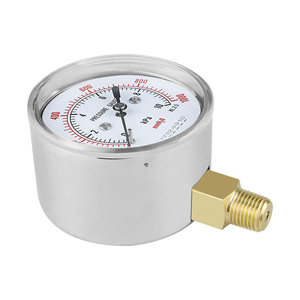



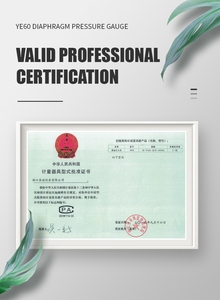






























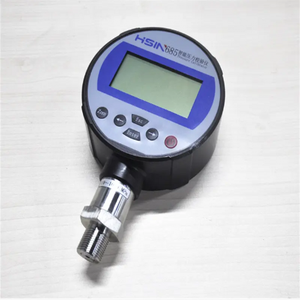


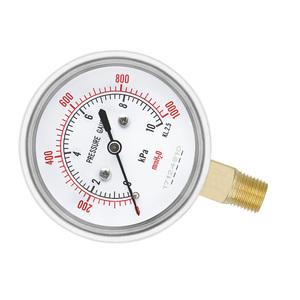








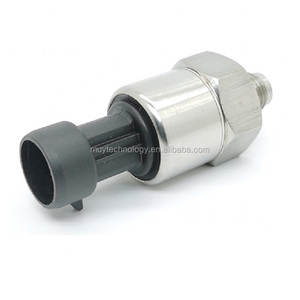

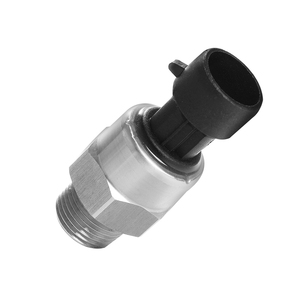

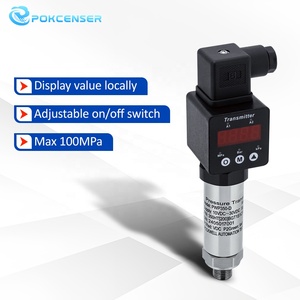



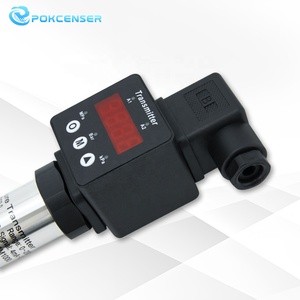
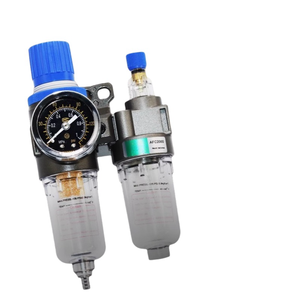
The low pressure gauge 0-5 psi comes in various types, each with unique design features and intended applications. The variety of these types allows users to pick an appropriate instrument for their specific low-pressure measurement needs. The main types of these gauges are mechanical, digital, and compound pressure gauges.
The mechanical or analog air pressure gauge uses traditional methods to measure and display pressure. Most of these gauges utilize helical or Bourdon tubes to sense pressure. The tubes transform pressure into a needle movement on a dial for visual measurement. The mechanical nature of these gauges often means they need no power source and provide continuous readings. These features make them reliable in various environments.
People commonly use mechanical gauges in sectors like HVAC, plumbing, and process industries. This is because of their durability and simplicity. Although specific models have limits on pressure ranges and accuracy, they effectively measure low-pressure environments.
Contrarily, a digital or electronic pressure gauge utilizes sensors such as strain gauges or piezoelectric elements to capture pressure data. It then transforms this data into a digital format for display. These types of gauges generally offer higher accuracy than mechanical ones. This increases their attractiveness for applications requiring precise measurement. In addition, digital gauges can store and output data, providing more functional flexibility in monitoring pressure measurement.
A compound gauge is specifically designed to measure both positive and negative pressures. This type of gauge is particularly useful in situations where a system may experience a vacuum and a low positive pressure simultaneously. For instance, in HVAC systems or fluid transfer pipelines. Most compound gauges display two ranges on a single dial or separate dials, depending on the design. This enables users to monitor pressure fluctuations across a broader spectrum of operating conditions. People typically use gauges in areas that require versatility in pressure measurement.
The penstock pressure gauge varies by application, though they all have similar core design elements. These design elements include pressure sensing mechanisms, casings, and display features, which must be tailored to the requirements of the users' environment and applications. To measure low-pressure accurately, the key features of the gauges must ensure reliability and durability in different industrial settings, including chemical processing and food and beverage services.
The materials used in a gauge's casing and internal components must withstand various stresses. These stresses may involve pressure, temperature, and corrosive substances, depending on the environment in which the instrument is used. For instance, people use stainless steel or brass in chemical processing and other industries exposed to high humidity and chemicals. They prefer these materials for their corrosion resistance and robustness.
Conversely, industries requiring hygiene and sterilization standards, such as the food and beverage sector, prefer gauges with hygienic designs. These designs include smooth surfaces and minimal crevices for dirty materials to hide in. The gauges may also have specially treated materials to withstand cleaning agents and high-temperature sterilization processes to ensure hygiene and extend their lifespan.
In numerous industrial applications, low-pressure gauges must remain operational in adverse situations. These situations include exposure to dust, water, or chemicals. To enhance their reliability and robustness, manufacturers employ effective sealing and waterproofing techniques. For example, silicone or other elastomeric seals help prevent contaminants from entering the gauge internals, affecting its performance and accuracy.
Besides sealing, another common method of improving gauges in adverse environments is ip68-rated waterproofing. These ratings protect the internal components from water ingress during extreme conditions. This durability means pressure gauges can maintain accurate readings even under prolonged exposure to wet or dusty environments, making them ideal for industries such as mining, agriculture, and construction.
One of the most crucial aspects of any pressure gauge is its accuracy. In industries like pharmaceuticals and power generation, even minor pressure fluctuations can severely impact system performance and safety. Thus, it is vital to have precision instruments in these industries. Precision instruments have rigorous factory or field calibration processes. The calibrations ensure that the gauges provide accurate low-pressure measurements within acceptable tolerances. Effective calibration methods are critical for maintaining accuracy over time.
People in these industries prefer to use pressure gauges with high stability and low drift. They also consider accuracy and stability important factors when selecting these instruments for their operations. Thus, identifying and implementing appropriate calibration strategies will directly impact operating performance and safety in industrial applications. Therefore, pay close attention to gauge selection is essential for performing optimally in critical low-pressure monitoring systems.
People in many industries require these pressure gauges for effective low-pressure monitoring. Each application has unique requirements for precision, durability, and environmental resistance. However, all need reliable pressure monitoring to ensure operational safety and efficiency. Some of these applications are the automotive industry, medical equipment, food processing, and HVAC systems.
In the HVAC industry, the low pressure gauges monitor refrigerant system pressures to ensure the systems function as intended. Poor pressure levels indicate refrigerant leaks or overcharging, which may lead to reduced system efficiency or failure. Therefore, people use these gauges in servicing and maintaining HVAC systems, which helps technicians identify issues early before they cause significant damage. This early detection helps improve the lifespan of the systems and their efficiency and reliability.
People widely use the low-pressure gauges in automotive applications to monitor tire and fuel system pressure. In tire pressure monitoring systems (TPMS), these gauges measure pressure levels within the low range of 0-5 psi. The range is critical for ensuring the vehicle tires are adequately inflated for safety and fuel efficiency. An under-inflated tire may lead to increased resistance, lower vehicle control, and a higher risk of blowouts. Thus, manufacturers integrate these gauges into their TPMS to enhance the driving experience by improving safety, efficiency, and performance monitoring.
The medical field also relies on water pressure gauges to monitor pressure in various equipment, such as blood pressure cuffs and respiratory devices. Since these instruments need to provide accurate pressure readings for patient safety and effective treatment, they have to operate within the low-pressure range of 0-5 psi. Thus, any malfunction or inaccuracy could severely impact patient care. Therefore, the precision inherent in these gauges ensures that medical professionals closely monitor patient responses during diagnosis and treatment, improving overall care outcomes.
One frequently used application for these low-pressure gauges in the food and beverage industry is monitoring and controlling the pressure in packaging and processing systems. In this industry, even minor pressure variations can affect food safety, product quality, and package integrity. Therefore, people rely on these gauges to ensure the proper functioning of processes like pasteurization, carbonation, and vacuum sealing. Monitoring pressure helps the companies maintain product quality, extend shelf life, and ensure the safety of packaged goods. It also improves the efficiency of their production processes.
People use low-pressure gauges in agricultural equipment to monitor critical fluid levels in irrigation and spraying systems. The gauges give precise low-pressure measurements within 0-5 psi. This accuracy helps the farmers ensure their systems function for optimal water distribution and chemical application. For instance, in drip irrigation systems, the proper pressure levels maintain even water distribution across the fields. Thus, equip farmers with the tools to manage their agricultural operations. This improvement helps ensure resource efficiency, crop health, and reduced system wear and tear.
To ensure optimal performance, people must adequately maintain hydraulic pressure test gauges. This maintenance includes understanding the key specifications of these instruments and how to service and replace them when necessary. The key specifications include pressure range, accuracy, and environmental resistance.
Knowing these specifications ensures users select the right gauge for their application and helps them in maintenance. People frequently replace low pressure air gauges with new ones when they become inaccurate. This inaccuracy causes operational issues. While the lifespan of a low-pressure gauge varies by use, most need replacement between 1-3 years. A few factors that influence this lifespan include operating conditions, exposure to chemicals or extreme temperatures, and gauge quality.
The period of replacement will directly impact measurement accuracy in sensitive industries like healthcare and manufacturing. Therefore, performing regular maintenance, including calibrating and replacing the gauge as required, is essential for its reliable operation. In addition, properly maintaining the instrument will help minimize downtime, improve system efficiency, and prevent costly errors in low-pressure measurements.
When removing a low-pressure gauge, the user must first ensure the connected system is depressurized to avoid accidents and injuries. They then unscrew the gauge using a suitable wrench. It is important to note that excessive force may damage the surrounding fittings. In some cases, the gauge may be secured with locknuts or retaining rings that need loosening or removal before the main gauge unscrewing.
For digital gauges powered by batteries, users should also disconnect any electrical connections securely prior to removal. This step will ensure safety while also protecting the integrity of the surrounding system components. If they need to replace a gauge, users must ensure the new instrument is compatible with their system before physically installing it to avoid disruption to operations. Compatibility here refers to the gauge's thread size, material, and type of pressure connection.
After verifying the compatibility of the new low-pressure gauge, users will thread it into the appropriate port on their system gently. Too much torque may cause damage to both the gauge and the fitting. Thus, users should tighten the gauge using a wrench until it is secure. They should ensure the gauge is properly aligned for easy readability. After installation, users should gradually re-pressurize the system while monitoring for leaks. Any leaks will lead to reduced accuracy and potentially damage the gauge and surrounding equipment.
The key to maintaining low-pressure gauges is to avoid exposure to contaminants like dust, chemicals, and moisture. Users in outdoor or adverse conditions should consider using protective covers or using gauges with sealed housings. Both methods will help improve the instrument's durability. Since accuracy directly relates to gauge performance in sensitive applications, regular factory or field calibrations are necessary to ensure precision over time. Failure to do this will lead to measurement errors. Rather than trying to fix an old instrument themselves, most people should replace low-pressure gauges with new ones when they become inaccurate. They should do this instead of trying to fix the instrument themselves.
Automotive, HVAC, medical, and food and beverage industries benefit from using the low-pressure gauges to ensure safety, accuracy, and operational efficiency. Each of these industries relies on reliable pressure monitoring for tire inflation, refrigerant systems, medical devices, and process control in food handling.
The gauges can withstand harsh conditions, such as chemical exposure and extreme temperatures, by incorporating robust materials, sealing techniques, and rigorous standards for calibration and accuracy. Materials such as stainless steel, brass, and other specially treated materials will make them endure chemical exposure and swelling from the gauge environment humidity and temperature extremes. Meanwhile, the waterproofing techniques help prevent water from getting into the instrument.
Avoiding exposure to contaminants like dust, chemicals, and moisture will help maintain these gauges. Users should also calibrate the instruments regularly to maintain accuracy. Gauges that have exceeded their lifespan or become too old will not be accurate, decreasing system safety and efficiency.
Low-pressure gauges measure pressure differentials by sending sound waves through fluids. The time taken for these waves to travel between sensors will change if pressure varies. This change in time will help the system calculate the pressure because it is directly proportional to pressure.
Select gauges within specifications for their applications, ensure they are regularly calibrated, and avoid environmental contaminants that deteriorate performance. Routine checks and proper usage will help increase their selection and operation in various environments while also extending their lifespan.